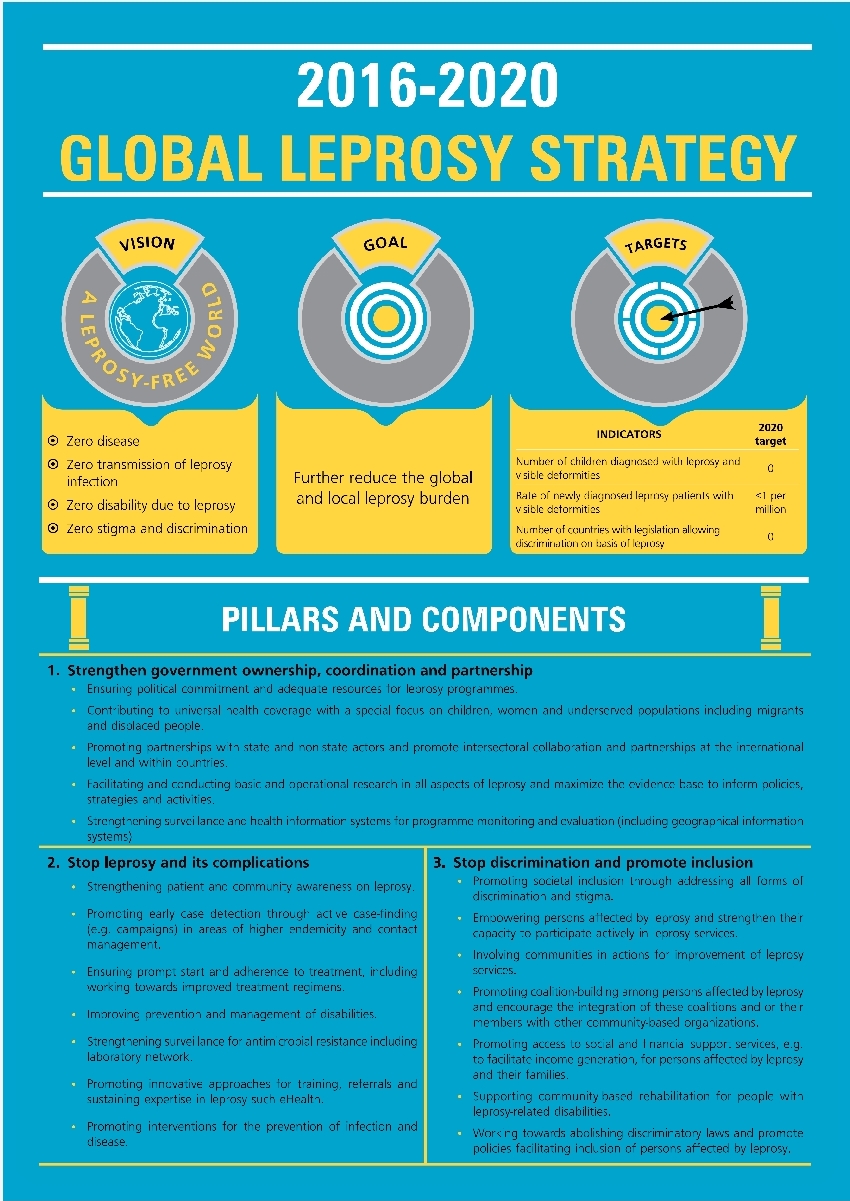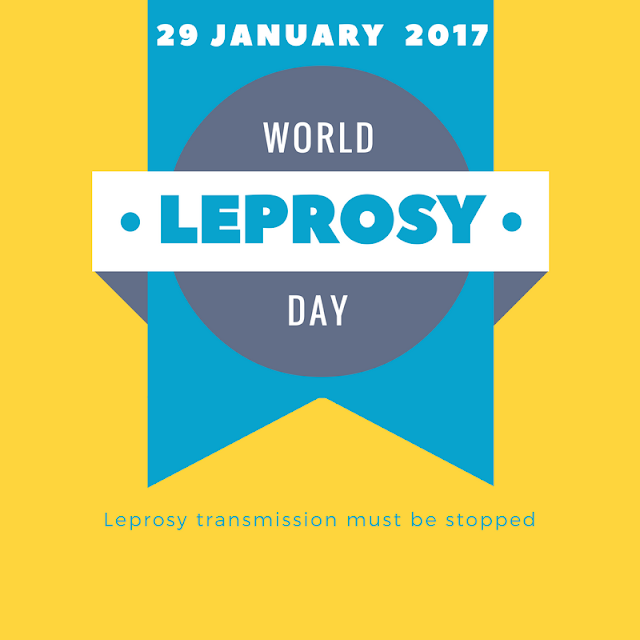- Ensuring political commitment and adequate resources for leprosy programmes.
- Contributing to universal health coverage with a special focus on children, women and underserved populations including migrants and displaced people.
- Promoting partnerships with state and non-state actors and promote intersectoral collaboration and partnerships at the international level and within countries.
- Facilitating and conducting basic and operational research in all aspects of leprosy and maximize the evidence base to inform policies, strategies and activities.
- Strengthening surveillance and health information systems for programme monitoring and evaluation (including geographical information systems).
- Strengthening patient and community awareness of leprosy.
- Promoting early case detection through active case-finding (such as campaigns) in areas of higher endemicity and contact management.
- Ensuring prompt start of and adherence to treatment, including working towards improved treatment regimens.
- Improving prevention and management of disabilities.
- Strengthening surveillance for antimicrobial resistance including laboratory network.
- Promoting innovative approaches for training, referrals and sustaining expertise in leprosy, such as e-health.
- Promoting interventions for the prevention of infection and disease.
- Promoting societal inclusion by addressing all forms of discrimination and stigma.
- Empowering persons affected by leprosy and strengthening their capacity to participate actively in leprosy services.
- Involving communities in action for improvement of leprosy services.
- Promoting coalition-building among persons affected by leprosy and encouraging the integration of these coalitions and or their members with other community-based organizations.
- Promoting access to social and financial support services, for example to facilitate income generation, for persons affected by leprosy and their families.
- Supporting community-based rehabilitation for people with leprosy-related disabilities.
- Working towards abolishing discriminatory laws and promoting policies facilitating inclusion of persons affected by leprosy.
- The targets of the new global strategy to be met by 2020 are:
- Zero disabilities among new paediatric patients.
- A grade-2 disability rate of less than 1 case per 1 million people.
- Zero countries with legislation allowing discrimination on basis of leprosy.




